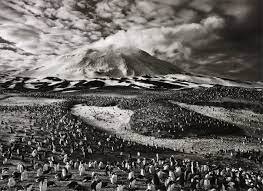Sebastião Salgado
Sebastião Salgado is regarded as a social documentary photographer and photojournalist (wikipedia), but he is so much more as well. His Genesis Exhibition that I visited at the Natural History Museum in London back in 2013 showed how much he also cared about our natural environment. Some 40 years earlier Salgado had switched from a career in economics to one in photography. One of the key aspects of his photography has been his dedication to long term projects as his latest exhibition Amazonia testifies. While Genesis documented a mainly unblemished and beautiful Earth teaching us to treasure and appreciate our natural surroundings, Amazonia focuses on the sustainable indigenous communities of the rain forest. Salgado had begun his photography career recording the beautiful and yet ugly side of industrialisation - think Workers : an archaeology of the industrial age (1993) -and latterly his concern has shifted to more of a sustainable post industrial revolution. Salgado asks us to look at his pictures as a series and not on their own. Like many of the really great photographers he aims to make an impact through a long on going project. It is nice to think that early in his career way back in 1982 he was awarded the W. Eugene Smith Grant from the W Eugene Smith Memorial Fund. Eugene Smith was of course a great photojournalist and documenter of important social and environmental issues such as the mercury poisoning in Minamata Bay, Japan.
A key feature of Salgado’s work, like so that of many other authentic photographers, is that it is subjective and reflects his ideology and persona. His projects are deeply political in nature. His bodies of photos have a purpose. Interestingly he believes that photographers should gain a good knowledge of history and social sciences to help understand society. This is most important in making images with deeper significance. It is this understanding that comes out in photographs rather than some independent style. Essentially photography then becomes a way of life. The photographer’s tools, his camera and equipment are are used to explore what is interesting, and what is interesting is never quite the same for two or more people. Salgado’s body of photographs could only have been done by Salgado. I have as much respect for the man as for the photographs. A main reason for enjoying Salgado’s photographs is that they reflect a real joy in travel and exploration. While I am unlikely to travel to as many places as he has photographed, I do get a real buzz from discovering new places and seeing new aspects of life. Photography is one way of reinforcing and documenting these adventures. So when I look at Genesis, the awe-inspiring photos of this huge project are just so inspiring.



